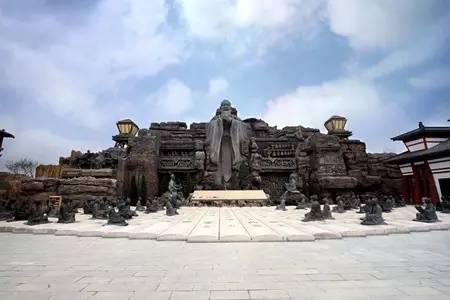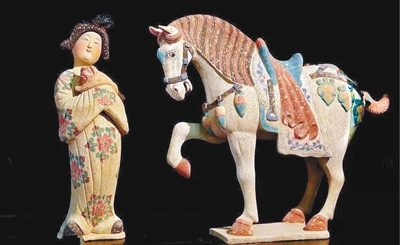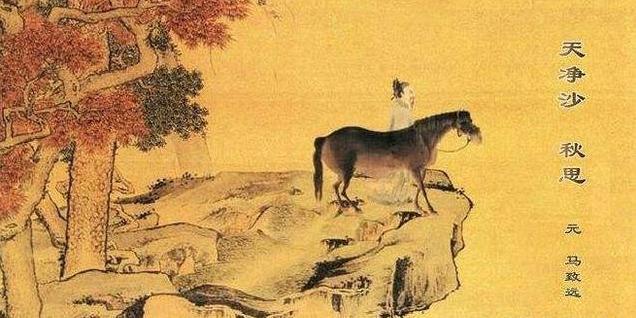Brilliant Culture of the Sui and Tang Dynasties
4 min readThe Sui and Tang dynasties,integrated in territory,prosperous in economy andliberal in politics,promoted the quick development of culture and education,setting up a complete school education system from the central to the local,involving laws,mathematics and other majors.The social reforms and systematic renovation during the period also gave fresh impetus to the advances in science,technology,literature,and art.
The period saw two great inventions that had a significant impact upon human civilization,namely wood block printing and gunpowder.

Enlightened by the techniques of seal engraving and printing from stone engraving in ancient China, paper printing from wood engraving was created in the early Tang Dynasty. The Zhenguan Period further saw records of engraving and printing. The Vajra Sutra, an exquisitely engraved printing work with bright ink in the ninth year of the Xiantong Period of the Tang Dynasty (868), was the earliestwood-block presswork with a definite time record in the world. Invention of wood-block printing that followed the papermaking technique played a significant role in keeping, spreading and developing human culture.
In the early Tang Dynasty, people stumbled upon the formula for gunpowder as they were making medicines. Sun Simiao,a medicine expert in the early Tang Dynasty, recorded in the book Alchemical Scriptures the way to make gunpowder. First, put two liang of sulphur and another two liang of saltpeter into an earthen pot, then burn the Chinese Honeylocust hot and put it inside the pot, which will jointly createraging flames. There are other records of peasants’ insurgent troops that appliedgunpowder to wars at the end of the Tang Dynasty. In addition, gunpowder was also used in hunting, mountain digging and stone mining.

Ancient Chinese architectural art entered a period of maturity during the Sui and Tang dynasties. Yu Wenkai, an architect of the Sui Dynasty, used drawings and models to design and direct the construction of the spectacular Daxing City, which was expanded as the city of Chang’ an in the Tang Dynasty, and Luoyang City, demonstrating the superb techniques in urban construction. The Zhaozhou Bridge, designed and built by Li Chun,a workman of the Sui Dynasty, is a 50-plus-long single-hole stone arch bridge with a span of 37 m wide. It has been well preservec until today and is reputed as “a wonder in world bridge-building history.”The Tang Dynasty was the golden age of ancient Chinese poetry, with more than 50,000 poems passed down to the present generations. Prosperity, openness and culturaldiversity, as well as the enterprising spirit encouraged by the fresh official selection system jointly created the brilliance of Tang poetry. Tang poems have orderly rhythm and proper parallel, and represent the feelings and emotions of the poets. Gao Shi, Cen Sen, Wang Changling and other frontier fortress poets sang thepraises of soldiers and officers at the frontline with strong, bold and generous words. Poems written by Meng Haoran, Wang Wei and other idyllic poets expressed the peaceful harmony between man and nature. The most notable poets in the Tang Dynasty were Li Bai and Du Fu. Li Bai, called the God of Poetry, wrote poems that were bold and unconstrained, representing the vigorous and personality-oriented spirit in the prosperous period of the Tang Dynasty. His romantic poems contained profound realistic meaning and deep love of fellow human beings.

Du Fu, called the Saint of Poetry, was destitute and homeless and worried about the country and the people all his life. His poems reflected contemporary social reality, especially people’s difficult lives amid the chaos caused by war. His poems were heavy and indignant, and called “poetic history.”
Paintings of the Tang Dynasty covered more and more fields, with figures, landscapes, flowers and birds separated from each other. Systematic painting techniques were invented and diverse schools of painting emerged, too. Wu Daozi, respected as the Saint of Artists, combined his interest in calligraphy with line drawing, enriching the movement and expressive force of the lines and achieving the artistic effect of “drifting clothes and moving lines.
The reunification in the Sui and Tang dynasties brought about the combination of calligraphic styles of both the South and North, which featured gracefulness and vigorousness respectively. Ouyang Xun, Yan Zhenqing and Liu Gongquan were the representatives of the regular script. Ouyang’s scripts were bold and dignified. Yan’s calligraphy was round and simple,while Liu had a serious and vigorous style. Zhang Xun and Hui Su were famous for cursive hand,with calligraphic characters smooth,drifting and unrestrained.
Affected by alien cultures,the music and dance in the Sui and Tang dynasties were colorful in styles.Emperor Xuanzong,acquainted with music rhythms,once imparted dancing and singing techniques to 300 musicians in a pear park,and created The Ancient Dance Music of Imperial Palace by himself by taking the styles of Western Regions for reference.
Mogao Grottoes,located in Dunhuang,Gansu,a key site along the Silk Road,is the world’s biggest and best-preserved Buddhist artistic treasure.There are more than 3,000 colorful sculptures and 45,000-square-meter frescoes preserved atpresent,most of which are works from the Sui and Tang dynasties.The Buddhist statues with different facial expressions look vivid and lively,and the frescoes with smooth and drifting lines are splendid and brilliant,displaying a unique verve and infinite charm.
The heydays of the Tang Dynasty showcased the features.








